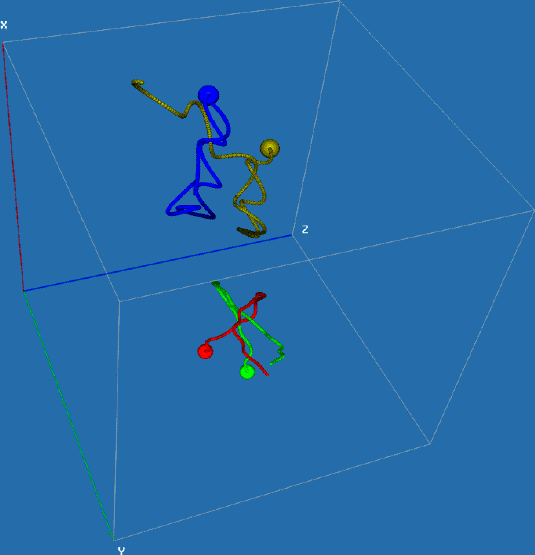
Trajectories of two H2 molecules (blue + yellow and red + green) showing an inelastic collision causing vibrational and rotational excitation
Martin, P.G., Keogh, W.J. & Mandy, M.E., Collision-induced Dissociation of Molecular Hydrogen at Low Densities (postscript preprint 290Kb: ApJ in press)
Mandy, M.E., Martin, P.G., & Keogh, W.J., Collisional energy transfer in H2(v-ab, j-ab) + H2(v-cd, j-cd) (postscript preprint 3.2Mb: JCP, 108, 492, 1998)
Martin, P.G., Schwarz, D.H., & Mandy, M.E., Master Equation Studies of Collisional Excitation and Dissociation of H2 Molecules by H Atoms. Astrophysical Journal, 461, 265-281, 1996. The rate of cooling and other functions are available in electronic form in these web archives. Ancillary data on A values, tunneling rates, and H2 energy levels are also available in electronic form in these web archives.
Martin, P.G., & Mandy, M.E., Analytic Temperature Dependences for a Complete Set of Rate Coefficients for Collisional Excitation and Dissociation of H2 Molecules by H Atoms. Astrophysical Journal, 455, L63-L66, 1995. The rate coefficients are available in electronic form in these web archives.
Back to home page of P. G. Martin.